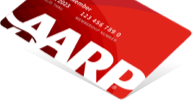AARP Hearing Center
Get help with retirement planning, from how much money to save before you retire to how to manage your savings
AARP Tools to Manage Your Retirement Savings


Save 25% when you join AARP and enroll in Automatic Renewal for first year
Get instant access to discounts, programs, services and the information you need to benefit every area of your life.
Retirement Videos
Retirement Living Destinations